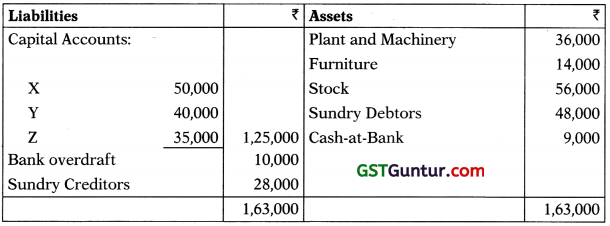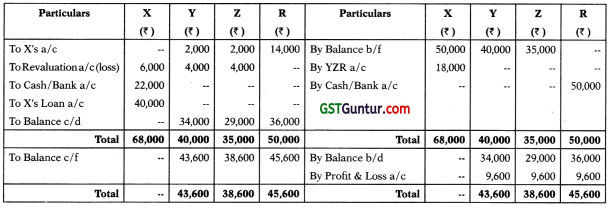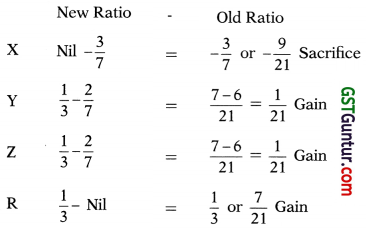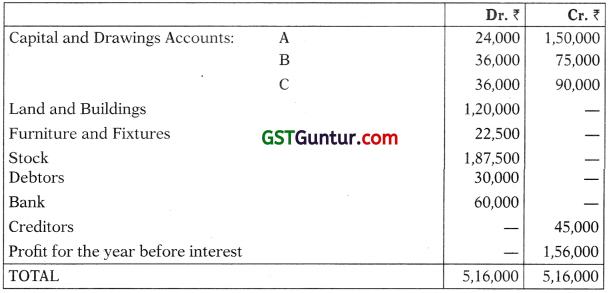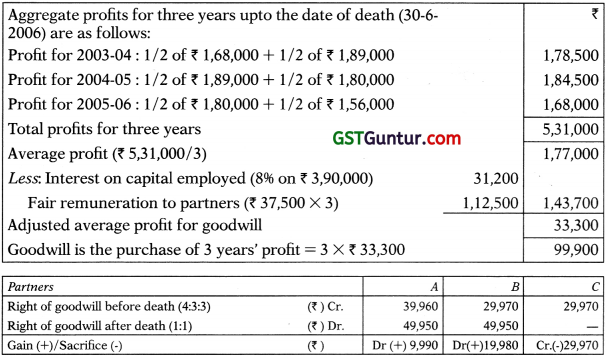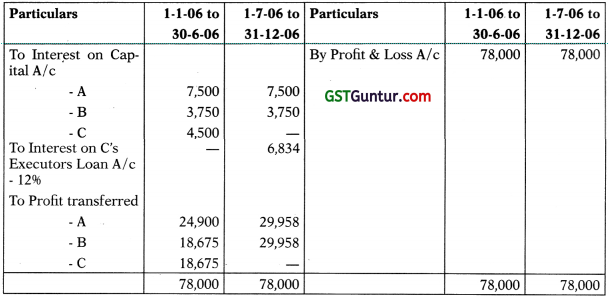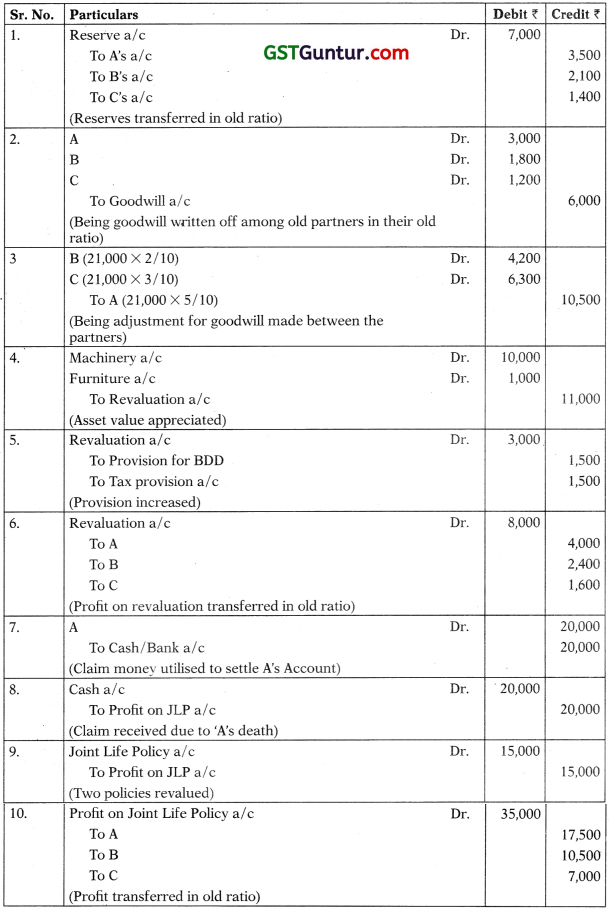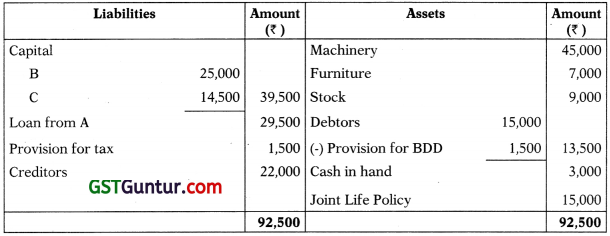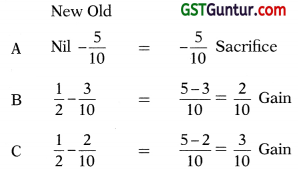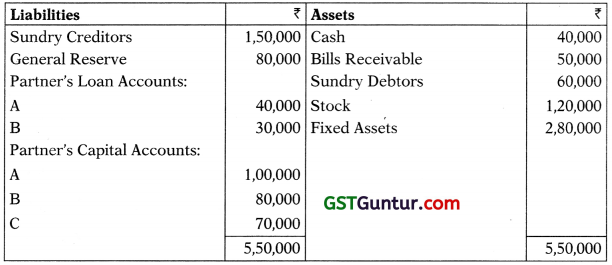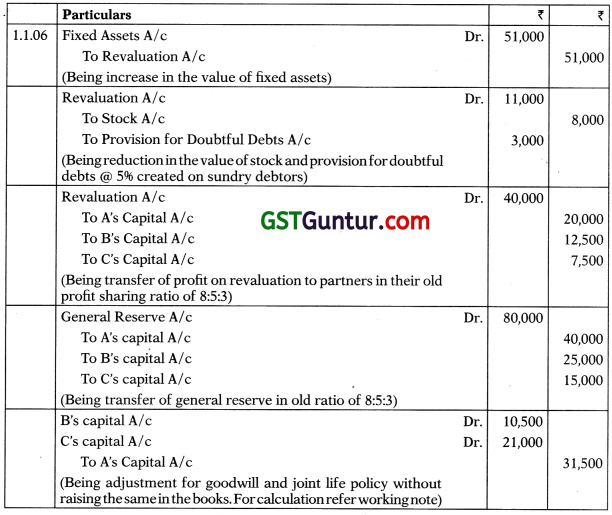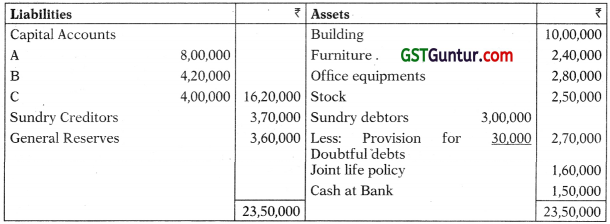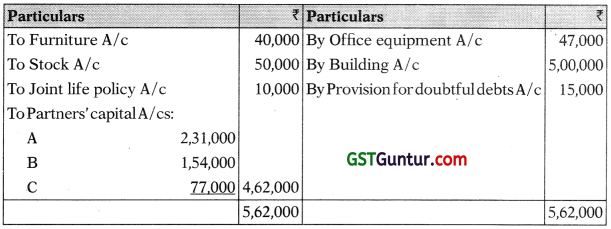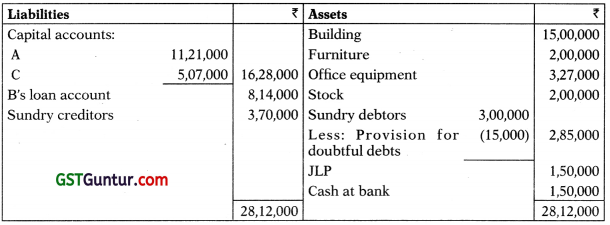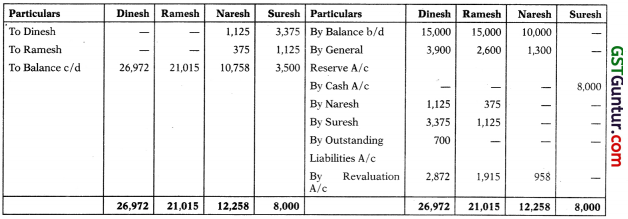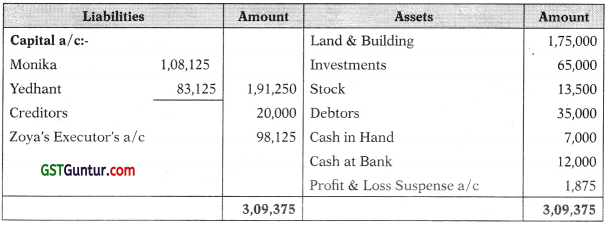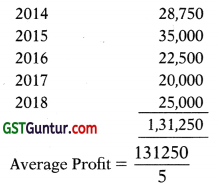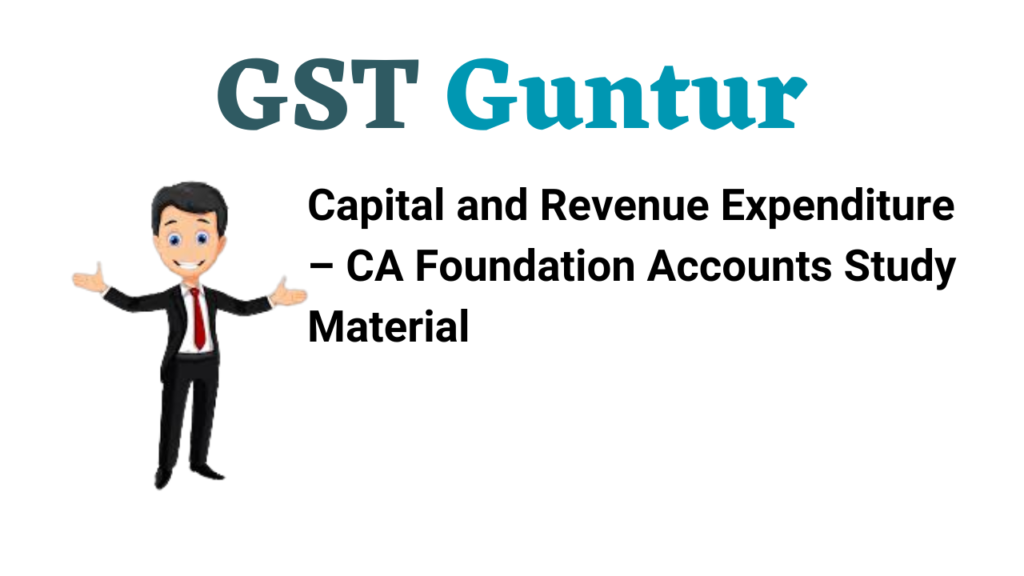Business Meetings – CA Foundation BCR Notes
Browsing through Business Meetings – CA Foundation BCR Notes Pdf help students to revise the complete subject quickly.
Business Meetings – BCR Notes CA Foundation
A business meeting is a formal gathering of business people for discussing and deciding some business matters. In business organisations many important decisions are taken in meetings. Business meetings take place at all levels of management. At the top level, Board of Directors hold meetings from time to time for taking crucial decisions regarding the company’s business.
At the middle level meetings of heads of departments deliberate upon inter-departmental issues. At the supervisory level, meetings of works committee are held to discuss and decide day to day problems of the factory and so on.
The main steps involved in conducting business meetings are as follows :
- Sending notice of the meeting
- Attaching agenda with the notice
- Ascertaining the quorum for the meeting
- Moving motions in the meetings
- Voting, poll and proxy
- Passing resolutions
- Recording minutes of the meeting.
Types of Meetings:
In a public limited company the following types of meetings are held:
1. Meeting of Board of Directors : Board of Directors is the highest organ of management. Meetings of the Board are held from time to time to take important decisions about the company’s affairs. New issues of shares and debentures, acquisition of some other firms, approval and adoption of half yearly accounts, declaration of dividend are some examples of issues which are decided in such meetings.
2. Statutory Meeting: This is the first meeting of’the members after the in-cooperation of the company. Its purpose is to acquaint the members with the company’s affairs. A statutory report is sent along with the notice of the statutory meeting. At this meeting, the members can discuss matters relating to the formation of the company.
3. Annual General Meeting : Every company is required to hold every year a general meeting of its members. This provides them an opportunity to discuss the working and affairs of the company.
4. Extraordinary General Meeting : It is a meeting held between two annual general meetings. An extraordinary general meeting is called to consider an urgent and important matter, the consideration of which cannot be postponed to the next annual general meeting. For example, the management of the company may convene an extraordinary general meeting for obtaining the approval of members for sub-division of the company’s share of ₹ 10 each into 5 shares of ₹ 2 each.
5. Class Meetings: Meetings of preference shareholders or of debenture-holders may be held to transact some business concerning them.
| Command Meeting | Committee Meeting |
| Meeting between Managers and subordinates. | Is a group appointed by parent organisation comprising of experts for decisions making. |
| Manager alone is responsible for decision making- Autocratic. | Systematic and logical steps which involves all members in the decision making process – participative. |
| Main objective of the manager is to share information, state, policies or give directions. | Objectives could vary advisory/problem solving/ decision making etc. |
![]()
Notice:
A proper notice of the forthcoming meeting must be sent to every person entitled to attend and vote at the meeting. It is a statutory requirement to issue a notice. A meeting is not properly convened unless notice of the meeting is sent. The notice must be in writing and it must be given sufficiently in advance. In case of company meetings, the notice must be sent 21 days before the date of the meeting.
The notice of a meeting must specify :
- The date, time and place of the meeting
- The name of the company
- The nature, purpose and type of meeting
- The authority by which notice is issued
- The name and signature of the person issuing the notice
- The matters to be discussed at the meeting, in serial order (unless separate agenda is sent)
- In the case of special business an explanatory statement
- The exact wording of any proposed resolutions
- The date of issue of the notice
- Any enclosures required to be sent with the notice.
A notice is a piece of formal communication. It should be simple, brief and clear.
1. Notice of Board Meeting: A notice of every meeting of the Board of Directors must be given in writing to every director at his/her usual address. The notice is prepared by the company secretary in consultation with the chairman.
Example 1 : Notice of a Board Meeting
ABC LIMITED
21, Bhikaji Cama Place,
New Delhi – 110 056
Notice
A meeting of the Board of Directors of the company will be held on May 10,2007 at 4 p.m. at the Registered office of the company at 21, Bhikaji Cain a Place, New Delhi to consider, approve and to take on record the unaudited quarterly financial results for the period ended June 30,2007. Kindly make it convenient to attend.
For and on behalf of the Board of Directors.
B.P. Sharma
Company Secretary
New Delhi
19th April, 2007
2. Notice of annual general meeting: A notice of at least 21 days must be given for the annual general meeting. The notice must state the date, time and place of the meeting. It must specify that a member entitled to attend and vote at the meeting can appoint a proxy. Copies of Annual Accounts, Directors’ Report and Auditors’ Report are sent along with the notice.
Example 2 : A Notice of Annual General Meeting
ABC Limited
21, Bhikaji Cama Place
New Delhi – 110 056
Notice
Notice is hereby given that the Twenty first Annual General Meeting of the company will be held on September 11,2007 at 11 a.m. at Air Force Auditorium, Subroto Park, New Delhi. Copy of the agenda and proxy form is attached herewith.
By order of the Board.
B.P. Sharma
Company Secretary
August 10, 2007
Notes:
→ A member entitled to attend and vote at the meeting is entitled to appoint a proxy to attend and vote in his place. A proxy need not be a member of the company. The instrument appointing a proxy should however be deposited at the registered office of the company not less than forty eight hours before the commencement of the meeting.
→ The transfer Books and Register of Members will be closed from August 12, 2007 to September 11, 2007.
→ The dividend when declared and sanctioned for payment will be payable on and from lo those share-holders whose names are on the Register of Members on 11th August, 2007.
Notice is hereby given that the 10th Annual General Meeting of the Members of XYZ Ltd. will be held on _______, at the Registered Office of the Company at Plot Nos. 16-18, Bandra Kurla Complex, Mumbai at ___________ a.m. to transact the following business.
Ordinary Business:
→ To receive, consider and adopt the Audited Balance Sheet of the company as on _______ and the Profit & Loss Account for the year ended on that date and Auditor’s and Director’s Reports thereon.
→ To declare dividend for the year ending _______.
→ To appoint a director in place of Mr _______ who retires by rotation and being eligible, offers himself for re-appointment.
→ To appoint Statutory Auditors of the company; and fix their remuneration. ”
Regd. Office: For and on behalf of Board of Directors
Plot No. 16-18,
Bandra Kurla Complex
Mumbai Chairman of the Meeting
Notes:
- A member entitled to attend and vote is entitled to appoint a proxy to attend and vote instead of himself and the proxy need not be a member of the company.
- Explanatory statement relating to special business is annexed to this Notice as required under section 173 of the Companies Act, 1956.
- The Register of members and the Share Transfer Books of the Company will remain closed from ___________ both days inclusive.
- Members are requested to notify immediately change of address, if any, to company’s Registered Office. While communicating to the company, please quote the folio number.
Shareholders desirous of obtaining any information concerning the accounts and operations of the company are requested to address their questions to the company’s Head office, so as to reach at least 5 days before the date of the meeting so that the information may be made available at the meeting to the best extent possible.
3. Notice of extraordinary general meeting: Notice for an extraordinary general meeting must be given 21 days before the date of the meeting. The notice must specify the date, time and place of the meeting. The purpose of the meeting is also stated in the notice.
![]()
Example 3 : A Notice of Extraordinary General Meeting
ABC Limited
21, Bhikaji Cama Place
New Delhi – 110 056
Notice
Notice is hereby given that extraordinary general meeting of the company will be held on 10th July 2007 at 10 a.m. at FICCI Auditorium, Tansen Marg. New Delhi to consider and if thought fit to pass the following resolution which will he proposed as a special resolution.
“Resolved that every equity share of ₹ 10 each fully paid-up be sub-divided into five shares of ₹ 2 each.”
By order of the Board
B.R. Sharma
Company Secretary
18th June, 2007
Agenda:
Agenda means a document that outlines the various matters to be discussed at a forthcoming meeting. It consists of a list of ‘things to be done’ at a meeting. It is in the form of a statement specifying the order in which the various matters are to be dealt with. Generally, the routine business is placed prior to the special business. Agenda is prepared and sent for all types of meetings. The Secretary is in change of the agenda. He prepares the agenda in consultation with the Chairman of the company. The agenda is sent along with the notice of the meeting.
The main features of agenda are as follows :
- It outlines all matters to be discussed in the meeting in a serial order
- It is fixed before hand
- It is usually sent along with the notice of the meeting
- It is customary to mention “any other matter with the permission of the chair” as the last item in the agenda
- Its main purpose is to set the tone and direction of the meeting.
Five Tips for Efficient Meetings:
- Don’t meet if the same information could be covered in an e-mail or a brief report.
- Begin the meeting on time even if a few participants are missing.
- Be absolutely clear on what the agenda is and follow it.
- Make it interactive. Don’t dominate the discussion.
- Bring the meeting to a clear, constructive close.
What goes into an agenda?
- The purpose and the desired outcome of the meeting.
- Who the participants are.
- The date, time and place.
- The length of the meeting.
- A list of the topics to be covered.
- A list starting who will address each topic and for how long.
- Any background information participants will need to know.
Preparation and despatch of agenda before the meeting is useful in the following ways:
- It helps the members to come prepared for the meeting
- It helps the chair person to conduct the meeting in a smooth and efficient manner
- It ensures that only matters relevant to the meeting are discussed
- It ensures that every point is properly taken up for discussion
- It facilitates the preparation of the minutes.
Distinction Between Agenda And Circular:
| Basis of Distinction | Agenda | Circular |
| 1. Purpose | To inform about what is to be done in a forth-coming meeting | To inform all departments and branches of the organisation |
| 2. Contents | A list of items to be taken up in a meeting | Information which is of interest and use to all parts of the organisation |
| 3. Target audience | The members entitled to attend the meeting | Heads of various departments and branches attend the meeting. |
| 4. Time period | To be sent usually 21 days before the meeting | No specified time period |
| 5. Attachment | Usually sent along with notice of the meeting | No such attachment |
While preparing the agenda, the secretary should keep in mind the following points:
- The agenda should be precise and clear
- It should be brief
- Each item on the agenda should be numbered serially
- The routine business should be listed before the special business
- All items of similar nature should be placed in continuous order.
![]()
Example 4 : Agenda of Board Meeting
ABC Limited
21, Bhikaji Caina Place
New Delhi – 110 056
Agenda of the meeting to be- held on May 10, 2007.
- To approve and sign the minutes of the last Board Meeting held on….
- To consider audited Annual Accounts and Directors’.Report to shareholders for the year ended 31st i March, 2007.
- To recommend dividend.
- To fix up the dale for concerning the Annual General Meeting and business to be transacted therein.
- To fix up the period during which Register of Members and the Share Transfer Book will be closed.
- To consider any other matter with the permission of the chair.
- To fix date of the next Board Meeting.
By the order of the Board
B.P. Sharma
Company Secretary
Example 5 : Agenda of Statutory Meeting
ABC Limited
21, Bhikaji Cama Place
New Delhi – 110 056
Agenda of the statutory meeting to be held on …………………….
- To call upon the secretary to read the notice convening the statutory meeting.
- To draw the attention of the members to the fact that the ‘List of Members’ is open for inspection.
- To propose that the Statutory Report as circulated be taken as read.
- To explain to the members that meeting is convened to as per section 165 of the Companies Act, 1956 I so as to afford an opportunity to the members to discuss any matters relating to the formation of the company and arising out of the Statutory Report.
- The Chairman to refer to matters, if any, relating to formation, progress and financial results and comment upon the financial position as shown in the Statutory Report.
- Invite discussion and answer the questions.
- To consider and approve the Statutory Report. By the order of the Board
B.R. Sharma
Company Secretary
Example 6:
Agenda of Annual General Meeting
ABC Limited
21, Bhikaji Cama Place
New Delhi- 110 056
Agenda of the Annual General Meeting to be held at ……………..
On …………… at …………………
1. To read the Annual General Meeting to be held at ………………..
2. The Secretary to read the Auditor’ Report on the Accounts.
3. The Chairman to move that the Directors’ Report and Accounts, as printed and circulated, be taken as read.
4. The Chairman’s speech.
5. The Chairman to propose that the Balance Sheet as at 31 st March, 2007 and the Profit & Loss Account for the year ended on that dale, and the Reports of Directors and Auditors thereon be approved and adopted.
6. The dividend of ₹ 10 per equity share as recommended by the directors be approved and sanctioned for payment.
7. To elect directors in place of those who arc retiring by rotation :
- To elect a director in place of Shri ………………. who is retiring by rotation and being eligible for re-election offers himself for re-election.
- To elect a director in place of Shri ………………. who is retiring by rotation and being eligible for re-election offers himself for re-election.
8. To appoint auditors for the next year and fix their remuneration.
9. To lake up any other matter with the permission of the chair. By order of the Board
B.P. Sharma
Company Secretary
Example 7 : Agenda of Extraordinary General Meeting
ABC Limited
21, Bhikaji Carna Place
New Delhi -110 056
Agenda of the Extraordinary General Meeting to be held on …………………
1. The Secretary to read the notice convening the meeting.
2. Splitting up of shares :
- The Chairman to explain the reason for the proposed splitting up of Equity shares and to move the following resolution as a special resolution – “That the one crore fully paid Equity Shares of ₹ 10 each be, and are hereby split into 5 crore fully paid Equity Shares of ₹ 2 each.”
- Mr ………………. to second the motion.
- The Chairman to invite discussion, put the motion to the meeting, take votes if necessary and declare the results.
3. Vote of thanks to the chair. By the order of the Board
B.P. Sharma
Company Secretary
![]()
Minutes:
Meetings have become an important means of exchanging ideas, discussing problems and issues and arriving at decisions. The decisions and resolutions made at meetings need to be recorded for future reference and actions. A written record of whatever was discussed and decided in a meeting is known as minutes.
Meaning of Minutes:
A minute is defined as ‘a note to preserve the memory’. The term ‘Minutes’ means a permanent written record or brief summary of the proceedings of a committee meeting or assembly. They are an official record of the deliberations of any formal meeting of persons, e.g., Parliament, a Legislative body, a Municipal Council, a Board of Directors or any Committee.
There are several types of meetings where discussions take place and certain decisions are taken. It is often necessary to keep an official record of these meetings. In the case of Parliament or Legislative body, the proceedings are recorded verbatim or in full. But in case of committee meetings only a summary is recorded. The term ‘minutes’ is generally used to refer to a summarised record of committee meetings. Thus, minutes are the official and systematic record of the proceedings of a meeting. They indicate when and where a meeting was held, who chaired the meeting, who were present, what decisions were taken, and so on.
Objectives and Importance of Minutes:
All organisations, whether business or social, consider it necessary to maintain a proper record of the business transacted at their various meetings. Once minutes are approved and signed, they are accepted as an evidence even in the court of law. In case of joint stock companies, it is compulsory to maintain minutes of the proceedings of every meeting of Board of Directors and members.
The main uses of minutes are as follows :
- Minutes contain a record of the business transacted and decisions taken at a meeting. They serve as a permanent record for future reference.
- Minutes serve as a reminder of the actions to be taken to implement the decisions arrived at a meeting.
- In case of joint stock companies, law requires maintenance of minutes. The interested parties are allowed to inspect the minutes.
- Minutes can be produced as evidence of the proceedings in a Court of Law.
- Minutes help in the efficient conduct of business. If proper minutes are not kept, the decisions arrived at meetings may be questioned by any member or Auditor and these cannot be proved in a Court of Law.
Distinction Between Minutes and Reports:
Sometimes verbatim (word by word) or summarised reports of the proceedings of meetings are prepared for circulation among members or for sending to the newspapers for publication. It is necessary to distinguish between such reports and minutes, although both record the proceedings of a meeting.
Distinction Between Minutes and Reports:
| Basis of Distinction | Minutes | Reports |
| 1. Starting word | A minute begins with the word ‘Resolved’. | The word ‘Resolved’ is not written while writing a report. |
| 2. Form | Minutes are generally not written in a narrative form. They record date, time and place of the meeting and resolutions passed. | Reports are always written in a narrative form giving a historical account of all that was discussed. |
| 3. Details | Minutes are summarised record of the proceedings of a meeting. | Reports may be verbatim or summarised. |
| 4. Evidence | Approved and signed minutes are accepted by the courts as evidence. | Reports are not accepted by the courts as evidence. |
| 5. Time of preparation | Minutes can be prepared within a reasonable time after the meeting. | Reports are prepared just after the meeting. |
| 6. Number | Separate minutes have to be prepared for each meeting. | A report may include summaries of more than one meeting. |
| 7. Manner of re-cording | The exact wording of resolutions adopted at the meeting must be recorded in minutes. | A report need not contain exact wording of the decisions arrived at the meeting. |
Types of Minutes:
Minutes are of two types –
- minutes of resolutions
- minutes of narration.
1. Minutes of Resolutions: In this type of minutes, only the resolutions passed at the meeting are recorded. It always begins with the words “Resolved that” followed by the exact resolution. The discussion which preceded the resolutions is not recorded. Even the movers and seconders of the resolutions are not mentioned. This is the usual form of writing minutes.
2. Minutes of Narration : In this type of minutes, the resolutions passed at the meeting are recorded. In addition, a brief account of the business discussed and transacted and the voting pattern are also recorded. Minutes of narration are somewhat similar to a report.
Minutes of narration generally cover the following :
- Names of those present at the meeting.
- Signing of minutes of the previous meeting.
- Recording of leave of absence.
- Taking note of reports, plans and financial statements.
- Tabling of correspondence.
- Tabling note of notice of interest of directors in contracts.
A minute of narration may also form part of the resolution.
Specimen of A Minute of Resolution:
Resolved that a call of ₹ 5 per share be made upon the Equity Shares (Nos. 1 to 10,00,000) of the company and such call to be payable on 31st July, 2004, to the company’s bankers, State Bank of India, Parliament Street, New Delhi, and that the call letter be issued to the shareholders on 31st May, 2004.
Specimen of A Minute of Narration:
- The Secretary read the notice convening the meeting.
- The solicitor to the company, Mr. Maheshwar Dayal, produced the certificate of incorporation No. 12345 dated 7th June, 2004.
- The consent to act as directors was signed by each of the directors and the secretary was instructed to file the same with the Registrar of Companies.
Specimen of A Minute of Narration Forming Part of Minutes of Resolution:
A letter from Mr. K. Madhavan, the Marketing Manager of the company, dated 11th April, 2004 tendering his resignation was read and it was resolved that the same be accepted as and from 11th April, 2004. Further resolved that the post be advertised in the Times of India and Economic Times. The draft of the advertisement was approved.
Contents of minutes:
Minutes can be written in two ways –
- tabular form
- narrative form.
1. Tabular Form: In this type of minutes, only the resolutions passed at the meeting are record¬ed. It always begins with the words “Resolved that” followed by the exact resolution. The discussion which preceded the resolutions is not recorded. Even the movers and seconders of the resolutions are not mentioned. This is the usual form of writing minutes.
2. Narrative Form: In this type of minutes, the resolutions passed at the meeting are recorded. In addition, a brief account of the business discussed and transacted and the voting pattern are also recorded. Minutes of narration are somewhat similar to a report.
Minutes of meetings generally contain the following particulars :
- The kind of meeting.
- Date, time and place of the meeting.
- The name of the person in the chair.
- Names of directors, secretary and persons in attendance.
- Reading and confirmation of the minutes of the last meeting and their signing by the Chairman, together with any matters arising from the minutes.
- Brief subject heading of each minute with the resolutions adopted.
- Financial statements and reports presented and approved in the meeting. These may be put in the form of Appendix.
- Appointments made, if any.
- In the case of special resolution, the number of votes for and against.
- Names of persons dissenting with any resolution passed at the meeting.
- Instructions given by the meeting to the Secretary or other officers.
- Chairman’s signature and date of verification of minutes as correct.
![]()
Guidelines for Writing Minutes:
Drafting of minutes is largely a matter of skill, judgement and practice. The writer of minutes needs to understand the situation, listen attentively and take notes during the, discussion. Minute is largely standardised and the standard form should be followed as far as possible.
Some hints for writing minutes are given below :
1. Minutes of each meeting should have a heading containing the type of meeting.
2. The date, time and place at which the meeting was held should be mentioned.
3. In the case of the general meetings and board meetings, it is usual to state the number of the meeting.
4. The minutes should contain the names of all those who were present and the capacity in which they were present. But where the attendance is large, the names of persons attending are not stated in the minutes. Only the number of persons who attended the meeting is mentioned. A separate register is kept for signing by each person attending the meeting.
5. Each item in the minutes is numbered and given a brief heading.
6. Each item should be written in the minutes in the same order in which the business was transacted.
7. Minutes should be brief but no important detail should be omitted.
8. Defamatory language, irrelevant points should not be recorded.
9. While writing minutes, no reference should be made to the feelings of the persons present. The tone of the minutes should be impersonal, Le., written in third person.
10. Dates and figures should be clearly and precisely stated in the minutes. If a reference is made to certain letters or reports, their numbers and dates should also be mentioned. This is necessary to. avoid the possibility of ambiguity and misunderstanding.
11. In case of a special resolution passed at the meeting, the number of those in favour and against should be recorded.
12. The secretary should go on taking notes during the meeting. If a clarification is required, it should be immediately sought. The minutes should be written as quickly as possible after the meeting so that no important facts are forgotten.
13. It is advisable for the secretary to show the rough draft of the minutes to the Chairman and get his approval. This will avoid incorrect recording and alternations later on.
14. The language of the minutes should be simple and precise. Simple past tense and passive voice are preferable. Be objective in your recording and use Reported Speech. Be careful while converting Direct Speech to Indirect Speech.
15. Ensure that each item discussed in the meeting has been recorded.
16. Use a separate paragraph for each item.
17. Record full text of motions, if a vote was taken and give exact text of resolutions adopted at the meeting.
Minutes of Statutory Meeting:
A specimen of minutes of statutory meeting is given below:
XYZ Company Limited
Registered Office : 11, Parliament Street, New Delhi
Minutes of the proceedings of the Statutory Meeting of XYZ Company Limited held on …………….. 2004 ………….. at ……………. p.m. at die Registered Office of the Company.
Mr …………….. in the chair
Mr ……………..
Mr ……………..
Mr …………….. directors
Mr …………….. secretary
and …………….. shareholders present as per attendance book.
1. Notice of the meeting: The secretary read the notice convening the meeting.
2. Statutory report: The statutory report dated was taken as read with the consent of the meeting.
3. List of members : The Chairman informed the members that according to the provisions of section 165 of the Companies Act, 1956, the list of members was placed on the table for the inspection of members.
4. Chairman’s address: The chairman then reviewed the activities of the company since formation and referred to the financial position and business prospects. He also invited the members to discuss and ask questions on any matter relating to the formation, financial position and prospects of the company and any other matter arising out the statutory report.
5. Approval of modification of contract: After the questions put by members were satisfactorily answered, a shareholder moved that the modifications in certain contract referred to in the report be approved. Accordingly, it was “Resolved that the modifications in the contracts as stated in the statutory report be, and are hereby, approved”.
6. Adoption of report It was then moved that the statutory report as presented be approved. Accordingly, it was unanimously.
“Resolved that the statutory report be, and is hereby, approved.”
7. Vote of thanks: A vote of thanks to the Chair was proposed and acclaimed by all, the chairman declared the meeting closed.
Place ……………..
Dated …………….. Sd. …………….. Sd. ……………..
Secretary Chairman
Minutes of Board Meeting:
A specimen of the minutes of the first meeting of Board of Directors is given below:
XYZ Company Limited
Registered Office : 11, Parliament Street, New Delhi
Minutes of the Board Meeting held at the Company’s Registered Office …………….. on …………….. day of …………….. 2004 …………….. at …………….. A.M./P.M.
Present:
Mr …………….. Chairman
Mr …………….. Managing Director
Mr …………….. Director
Mr …………….. Secretary
In attendance, Mr. …………….., solicitor.
1. Chairman : Upon the directors taking their seats, Mr. …………….. Was requested to take the Chair.
2. Certificate of Incorporation : Mr. …………….. produced the certificate of incorporation of the Company No. …………….. dated …………….. 20 ……………..
3. Chairman : It was unanimously resolved that Mr. …………….. be, and is hereby, elected and appointed Chairman of the Company and of the Board of Directors.
4. Quorum at Board meetings: It was decided that, in accordance with clauses Nos …………….. of the Company’s Articles, the quorum of directors at Board meetings should be three directors.
5. Appointment of Managing Director: It was resolved that Mr. …………….. be, and is, hereby, appointed Managing Director of the Company for a period of five years at a salary of ₹ per month.
6. Appointment of Secretary: It was resolved that Mr …………….. be, and is hereby, appointed secretary of the company at a salary of ₹ per month, the appointment to be determinable upon three months’ notice given by either the Company or the Secretary.
The minutes then record the decisions of the Board and resolutions passed in respect of the following matters:
- Appointment of bankers, and conferring authority on the person who would sign the cheques.
- Endorsement of cheques.
- Signature of bills of exchange.
- Appointment of auditors.
- Approval of common seal of the Company and the persons who would hold keys of the locks.
- Consideration of agreement with vendors.
- Issue of shares to vendors.
- Issue of prospectus.
- Fixation of date of next meeting.
![]()
Minutes of Annual General Meeting:
A specimen of the minutes of the annual general meeting of a company is given below:
XYZ Company Limited
Registered Office : 11, Parliament Street, New Delhi
Minutes of …………….. Annual General Meeting of the Company held at …………….. on the …………….. day …………….. 20 …………….. at …………….. A.M./P.M.
Present:
Mr. …………….. Chairman
Mr. …………….. Mr. …………….. Secretary
Mr. …………….. Mr. …………….. Auditor
Mr. …………….. Director Mr. …………….. By invitation
and …………….. Shareholders as per attendance book
| Subject | Proposer and Seconder | Details |
| 1. Notice of meeting | The secretary read the notice concerning the meeting. | |
| 2. Auditor’s report | The secretary read the report of the auditors on accounts and balance sheet. | |
| 3. Directors’ report and accounts | Proposer: Chairman Seconder: Mr. ……………..(Shareholder) |
Directors’ report and accounts previously printed and circulated were taken to be read. Then the chairman addressed the meeting, invited questions and answered them satisfactorily. Resolved: That the directors’ report and accounts for the year be, and are hereby, approved and adopted. |
| 4. Declaration of dividend | Proposer: Chairman Seconder: Mr. …………….. (Shareholder) |
Resolved that a dividend of ………………. % on Preference Shares and ………………. % on Equity Shares, less income-tax, as recommended by directors be, and is hereby, declared payable to shareholders appearing in Register of Members as on ……………….. 20 ……………… |
| 5. Re-election of directors | Proposer: Chairman Seconder: Mr. ……………..(Shareholder) |
Resolved that Mr …….., a director, retiring by rotation but eligible for re-election be, and is hereby, re-elected as a director of the company. |
| 6. Appointment of auditors | Proposer: Chairman Seconder: Mr. …………….. (Shareholder) |
Resolved that M/s ………., the retiring auditors be, and are hereby, appointed auditors at a remuneration of ₹ ………………. to hold office until the next annual general meeting. |
| 7. Vote of thanks | Proposer: Chairman Seconder: Mr. …………….. (Shareholder) |
A vote of thanks was unanimously accorded to the Chairman and other directors. |
| Chairman …………. | Dated ………… |
1. Notice: The secretary read the notice convening the meeting.
2. Chairman’s speech : The Chairman explained to the meeting the need for amending regulation 29(1) of the Company’s Articles of Association. He pointed out the difficulties that are likely to arise to the Company as well as the members if this amendment is not carried out. He moved the following resolution as a special resolution :
“Resolved that clause (1) of regulation 29 of the Company’s Articles of Association be deleted and the following substituted therefor :
(i) …………………………………… .”
After discussion, the motion was put to vote. The requisite number of members having demanded a poll, the Chairman decided to take the poll forthwith. After the report of the scrutineers was received, the Chairman declared the motion passed by the requisite majority.
3. Vote of thanks: There being no other matter, the meeting ended with a hearty vote of thanks to the Chair.
Place …………….. Sd. …………….. Sd ……………..
Date …………….. Secretary …………….. Chairman
Alteration of Minutes:
Ordinarily, the minutes cannot be altered once they are written. However, any minor mistake or clerical error which is detected when the minutes are being read at the next meeting, can be rectified and signed by the chairman. If the mistake is of a serious nature, such as a material misdescription or incomplete description of the proceedings, then that part of the minutes may be sourced out and the correct minutes written up afresh.
The chairman must sign both the cancellation as well as the fresh entry. However, if a serious or material mistake in the terms of any resolution is detected, this should not be rectified by scoring out. Rather a fresh resolution should be adopted at the next meeting to undo the effect of the earlier resolution. The secretary should make some notes against the earlier resolution by giving the reference of the new resolution.
Confirmation of Minutes:
Usually the minutes of a meeting are read at the next meeting before it is signed by the chairman. This is done to provide an opportunity to point out any mis-statement or error which may have crept into the minutes. The reading of minutes of a previous meeting at the next meeting is a mere acknowledgement that the proceedings have been correctly recorded. If during the reading of the minutes some members point out any discrepancy or mis-statement, the same are rectified before the minutes are signed by the chairman. This procedure is known as confirmation or verification of minutes.
Handling Business Meetings (Role of Chairman):
1. Clearly Define the Purpose of the Meeting : It may not at all be necessary to call a meeting. It is quite possible that the purpose may be achieved by circulating a note. If it is necessary to call a meeting, decide its purpose clearly.
2. Select the Participants : The persons who are to attend the meeting, should be selected carefully. They must have knowledge and interest in the issue and be able to spare adequate time for the meeting. The number of participants should be restricted.
3. Give Adequate Notice: The members should be informed well in advance of the meeting. The notice of the meeting should mention clearly the day, date, time and venue of the meeting.
4. Distribute the Agenda : The agenda (list of items to be discussed) of the meeting should be circulated will in advance. This will enable the members to come prepared and participate effectively in the meeting.
5. Provide All the Facts: When the agenda requires the members to know some important facts, provide the necessary facts. For example, if a meeting has been called to discuss decline in sales, the figures concerning sales for the current year/quarter and past year/quarter should be communicated to the members.
6. Observe Punctuality : Start the meeting on time. Do not think of those who are absent, think of those who are present. You can end the meeting on time only when you begin on time.
7. Ensure the required quorum: Quorum means the minimum number of persons who must be present before the meeting can begin.
8. Begin with a Positive Note: Chairman’s opening remarks set the tone and direction of the meeting. Give the members the feeling that they have come for a useful purpose and they are going to make their distinct contribution towards the accomplishment of that purpose.
9. Encourage Participation : There is often general reluctance to speak on the part of members. They may be anxious to know what stand others take. One may expect others to give one the lead. The chairman should break the initial silence and encourage participation in the deliberations.
10. Be Brief: The chairman’s initial remarks should be brief. Short opening suggests urgency of the issue and keeps members alert.
11. Remain Impartial: The chairman should take no sides and should be neutral. He should give everyone the opportunity to speak and participate in the meeting. Emotional build up, personality flare ups and tension should be controlled through humour.
12. Control the Deliberation: Ensure that one person speaks at a time and members maintain silence. Private discussions need to be avoided as these distract attention Handle the meeting firmly to keep it orderly and on the right track. Do not suppress unfitting views. Clarify contributions of members by frequently summarising the deliberations.
13. Sum Up : Before end of the meeting, point out the decisions meeting arrived at. Along with the decisions, disagreements, if any should also be stated clearly. Indicate how the decisions made are to be implemented, close the meeting in time and do not allow it to drag on unnecessarily. However, abrupt close is not good.
Skills Required By Chairman of Meetings:
In order to perform his role effectively in meeting, the chairman requires the following skills:
- Know the quorum for the meeting and ensure the quorum before starting the meeting.
- Call the meeting to order and ask the secretary to read the agenda of the meeting.
- Clarity the purpose of the meeting in short and vivid manner.
- Show a positive attitude.
- Give every member the opportunity to speak and allocate time in equitable and fair way.
- Ability to check personality clashes and emotional flare-ups.
- Remain cool and impartial even under provocation.
- Summarise the discussion at appropriate intervals and at the end of the discussion.
- Deal with questions directed at him tactfully.
- Keep liaison with the secretary so that proceedings of the meeting are duly recorded.
- Encourage and support the discussion through appropriate gestures. Discourage those who interfere with the order in the meeting.
![]()
Appendix:
How effectively do you manage your meetings?
For each factor, circle a number that most represent your view of your own management of the meeting that you chair.
| 1. I spend the minimum amount of time in meetings and they are effective and well planned. | 12345 | I spend far too much time in meetings and mainly they could be more effective. |
| 2. I always plan ahead and clearly define the purpose of my meeting. | 12345 | I rarely plan my meetings in advance and the purpose is probably unclear. |
| 3. I always establish in my own mind that the meeting is cost-effective. | 12345 | I very rarely attempt to establish whether my meeting are cost-effective. |
| 4. I always try to keep my meetings to the minimum number of relevant people. | 12345 | Probably my meetings have too many people and not all those people are necessarily relevant. |
| 5. I spend time thinking carefully about my agenda and I always publish it in advance. | 12345 | I rarely publish an agenda and, when I do, it is probably weak and sketchy. |
| 6. Normally people are well prepared for my meetings. | 12345 | I always have the common complaint that people are not well prepared for my meetings. |
| 7. I always publish the finish time and allocate time properly to each agenda item. | 12345 | I rarely publish a finish time and my time management could probably be improved fairly substantially. |
| 8. I am very conscious of the need for good chairmanship and I actively try to improve my skills. | 12345 | I am afraid that my chairmanship is haphazard. |
| 9. At the end of each meeting I allocate time to summarising, and ensure that all actions are accountable. | 12345 | I often end a meeting without ensuring that actions are clearly accountable. |
| 10. I always try to ensure that meetings where I am not chair are properly managed. | 12345 | Other people’s meetings are their responsibility. |
If you selected lower numbers, you have very firmly grasped that meetings need to be effectively managed and you are always conscious of the need to ensure good performance. Higher numbers need attention – your meetings will be low in effectiveness and not particularly productive for you or the participants. A consistent choice of number five means that you are wasting your time and everybody else’s time in your meetings. Almost certainly the output of your meetings is very erratic.
Successful business meetings, they say, are the life blood of any executive’s career. Hence arranging a conference is as important as the meeting itself. Here, we present some of the important things to keep in mind while preparing for such events.
Subject:
Conferences can be of several kinds. The secret behind organising a successful conference is to first understand what it is meant to achieve and then to chart out a proper agenda for it. This may require several internal meetings, followed by meetings with outsiders like tour organisers, hotels and travel agents.
Exhibitions and Trade Shows:
Some conferences may involve exhibitions or trade shows. In such cases, you must ensure that the venue is large enough to hold the exhibition and that there is sufficient space for closed-door or open-forum meetings.
Technology:
Conferences often need extensive tech support for success. Video conferencing plays a vital role in several conferences, while some meetings can make do with audio conferencing facilities only. Whatever the case, proper arrangements must be made in advance. Wi-fi-enabled boardrooms, touch screens, centrally-monitored projectors and screens, lights, laptops, the works, they are all required, and so, should be planned for in advance.
Incentives:
Perhaps one of the easiest ways of incentivizing employees while making them work is to organize a business conference for them in exotic locales; in other words, allowing them to mix pleasure with business. For most of these meetings, one needs to decide whether or not to include executives’ spouses and families. Also, the number of people or the strength of the group needs to be ascertained and a budget worked out. This will determine the possible destinations where the meeting can be held.
Location:
Depending on how much you are willing to invest in your conference, you could look at either having it in your office auditorium (if it has one), at a local conference centre, five-star hotel or take that extra step to arrange for an outstation trip in India or abroad. If you do decide to travel out of station, you must research the destination thoroughly and plan out any conducted tours that may want to offer the delegates; also draw up a list of good eating joints and shopping venues at these places. These are several travel agencies that take charge of all your requirements.
Transportation:
In case you need to add that zing to the usually dull round table conference, you must also ensure that your business partners/executives find it easy to not just get to the venue, but get there on time. The best idea would be to arrange for transport for everyone so that the entire group assembles at one common point, and you can take them to the venue. This way, you could also throw in a surprise element of an undisclosed conference venue!
Once you know the venue, it is of prime importance that your business delegates have a comfortable stay and take home memories of not just hectic business meetings but also of a time well spent. Zeroing in on the right accommodation facilities and venues helps you make the trip memorable. A word of caution: in case you are planning to hold your meeting in some place faraway, pay special attention to the menu, particularly if you have people who want only a particular kind of diet! Not everyone on your team might be game having roasted crocodile for dinner.
![]()
Conducting And Participating In Meetings:
Meetings involve oral communication. In a meeting you may be either a leader or a participant. As a leader you are required to conduct the meeting. There are certain rules of conducting meetings (called parliamentary procedure). You should know and follow these rules while conducting a meeting. In addition, you should take the following steps:
1. Plan the meeting: A meeting requires thorough preparation. First, develop an agenda (a list of topics to be discussed) to achieve the goals of the meeting. The items in the agenda should be arranged in the most logical order. After preparing the agenda, make it available to all those who are to attend the meeting.
2. Follow the Agenda: Follow the agenda item by item. In most meetings, the discussion tends to stray and new items come up. Keep the discussion on track In case new items arise during the meeting, take them up at the end or postpone them for a future meeting.
3. Move the Discussion Along: Once an item is covered, bring up the next one. Do what is necessary to proceed through the agenda. However, you should not cut off discussion before all important points have been made. The goal should be to permit complete discussion on the one hand and to avoid repetition and useless comments on the other.
4. Control those who talk too much: In most meetings, a few persons tend to dominate the discussion. The leader’s task is to control them. You should step in when they begin to astray or bring in useless matter. You can do so tactfully by asking for other viewpoints or moving on to the next topic.
5. Encourage Everyone to take part: Bring those who talk too little into the discussion. You can do this by asking for their viewpoints and showing respect for their comments.
6. Control Time: When your meeting time is limited, decide in advance how much time will be given to each item. Then at the right time, you should end discussion of each item. You may announce time, goals in the beginning of the meeting and remind the participants time status throughout the meeting.
7. Summarize at Appropriate Times: As a leader, you should summarise comments and conclusions made on each item at appropriate times.
Participating in Meetings:
As a participant in a meeting, you should do the following:
1. Follow the agenda: You should not bring up items not on the agenda. Also avoid commenting on such items brought up by other participants.
2. Participate: Everybody present should meaningfully participate in the discussion. You should talk whenever you have something to contribute.
3. Do not Talk too much: Avoid talking too much and getting carried away. Always respect the rights of others.
4. Cooperate: By its very nature, a meeting requires cooperation from all the participants. Therefore, you should work with others in every possible way.
5. Be Courteous: As a participant you should be courteous to others. You should respect their opinions and permit them to speak
Etiquette In Meetings:
While attending a meeting good manners such as the following need to be followed:
- Be punctual for the meeting.
- Seek permission from the chairman before speaking.
- Stand up before you start speaking.
- Address your comments to the chairperson.
- Stick to the issue and do not bring up issues not listed in the agenda.
- Be brief and to the point.
- Don’t interrupt others when they are speaking.
- Be polite or courteous in your language and body movements.
- In case you want to discuss anything outside the agenda, take up in any other matter at the last with the chairman’s permission.
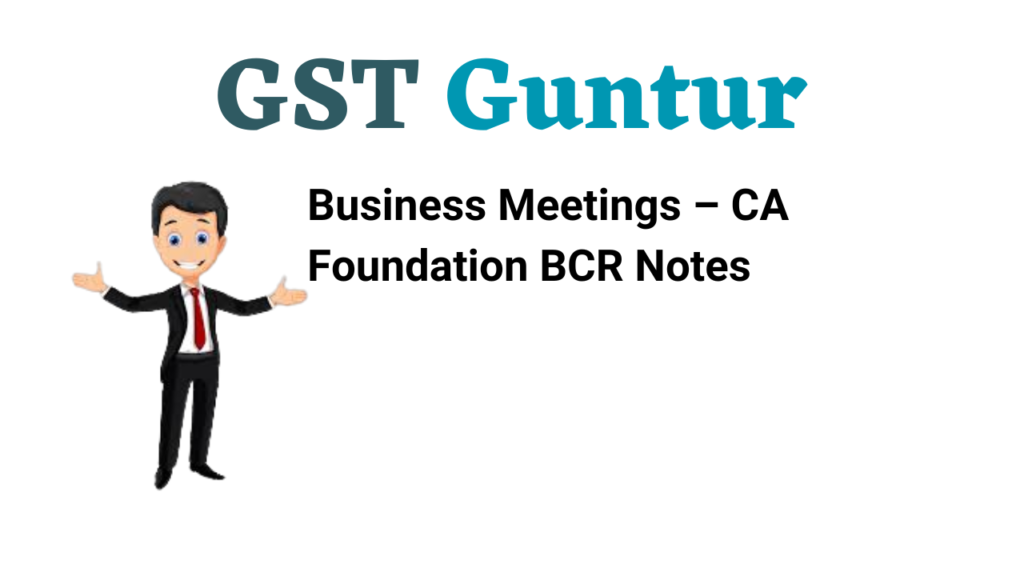
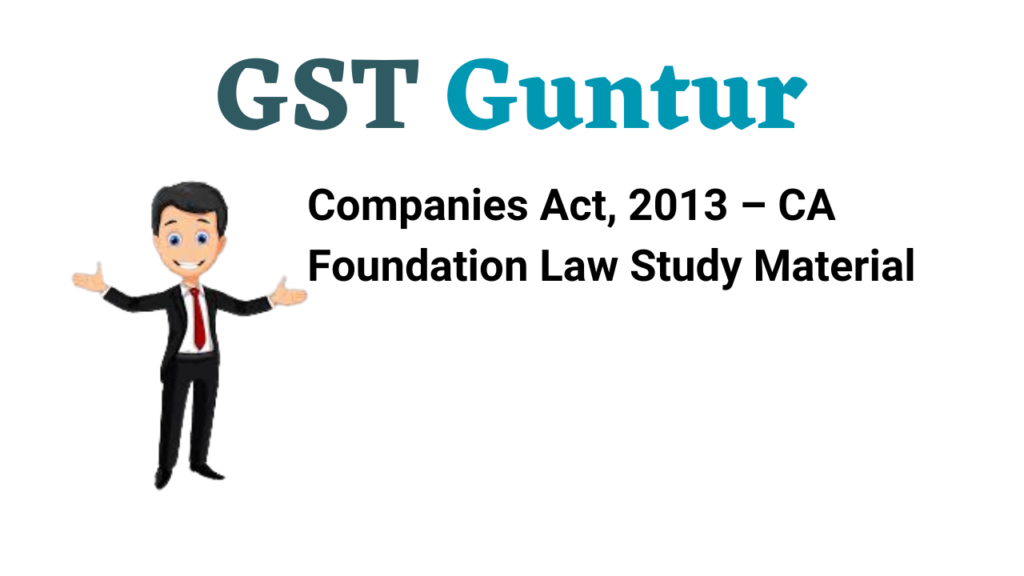

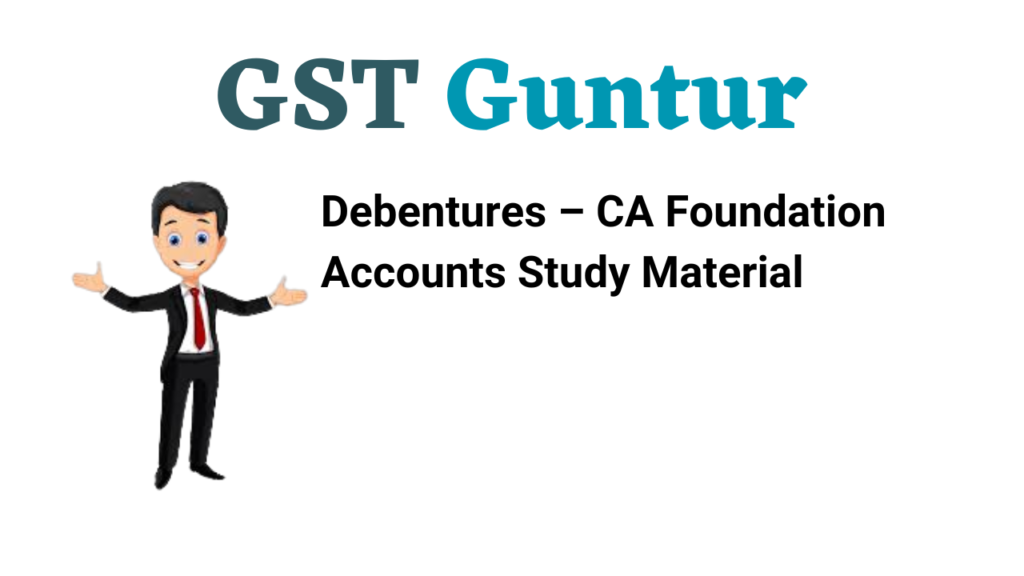
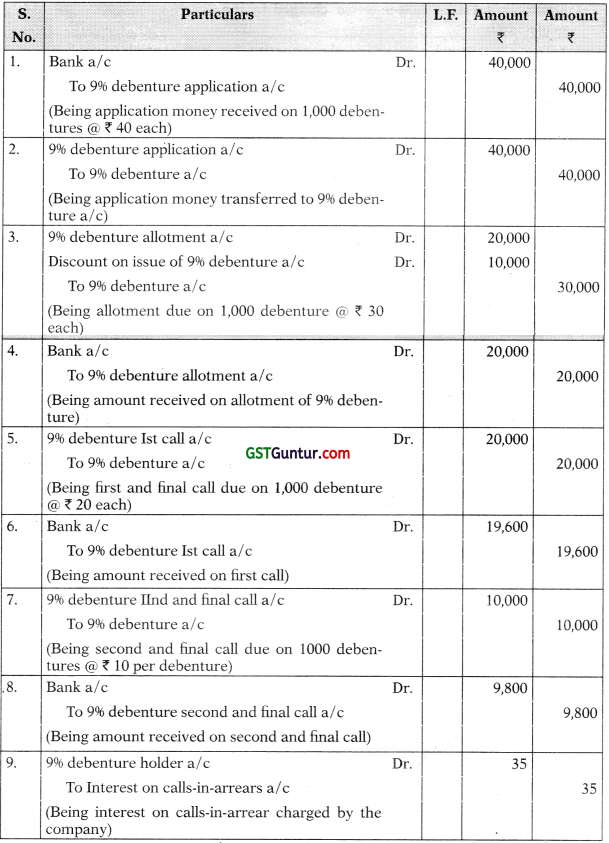
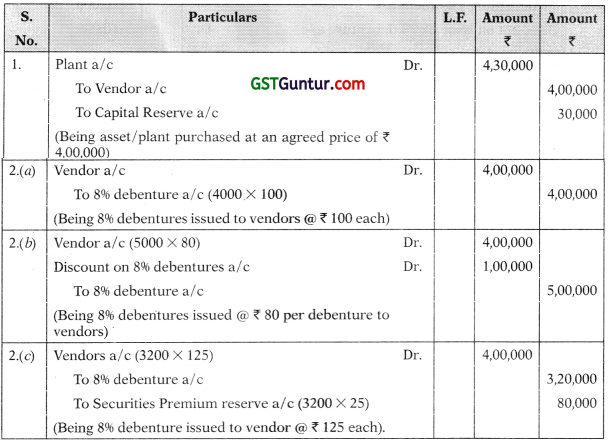
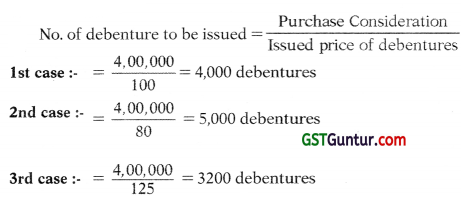
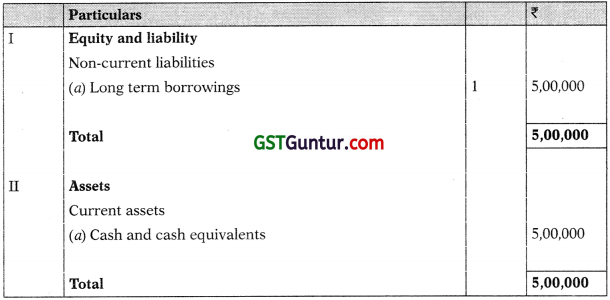


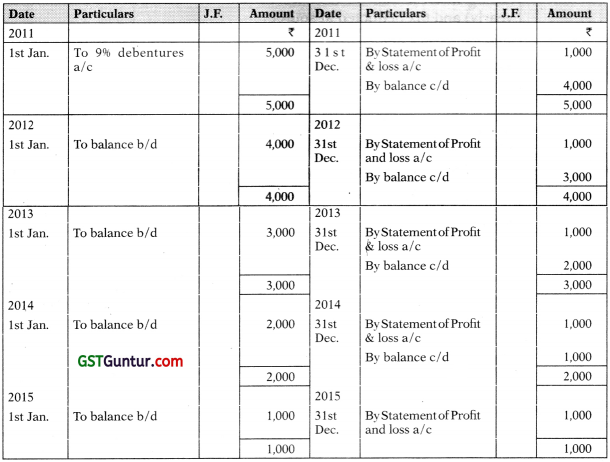
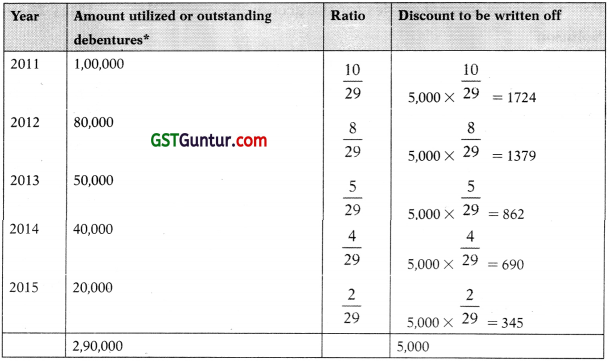
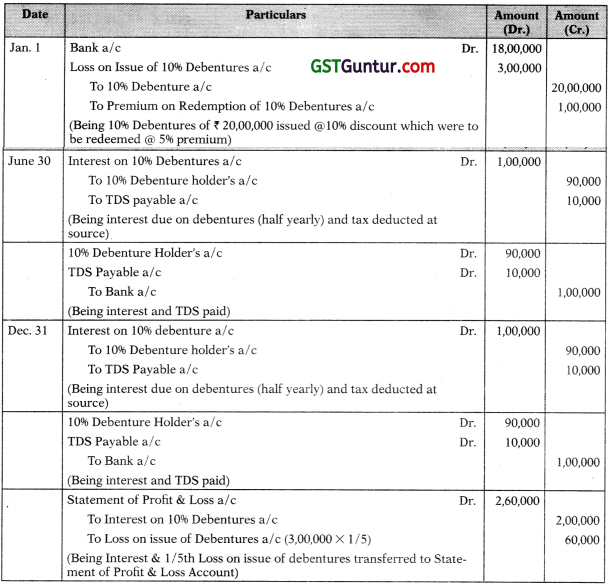
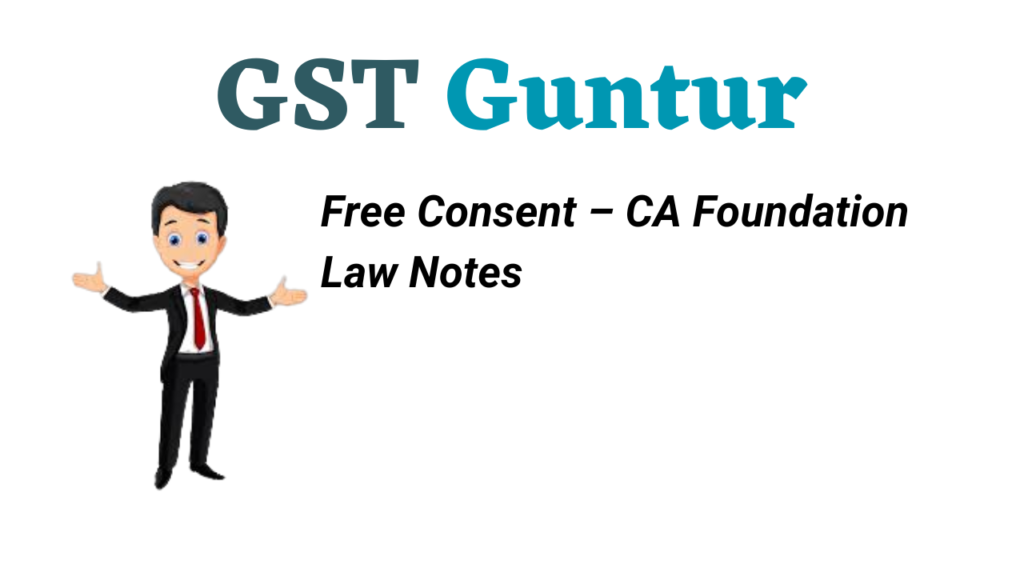
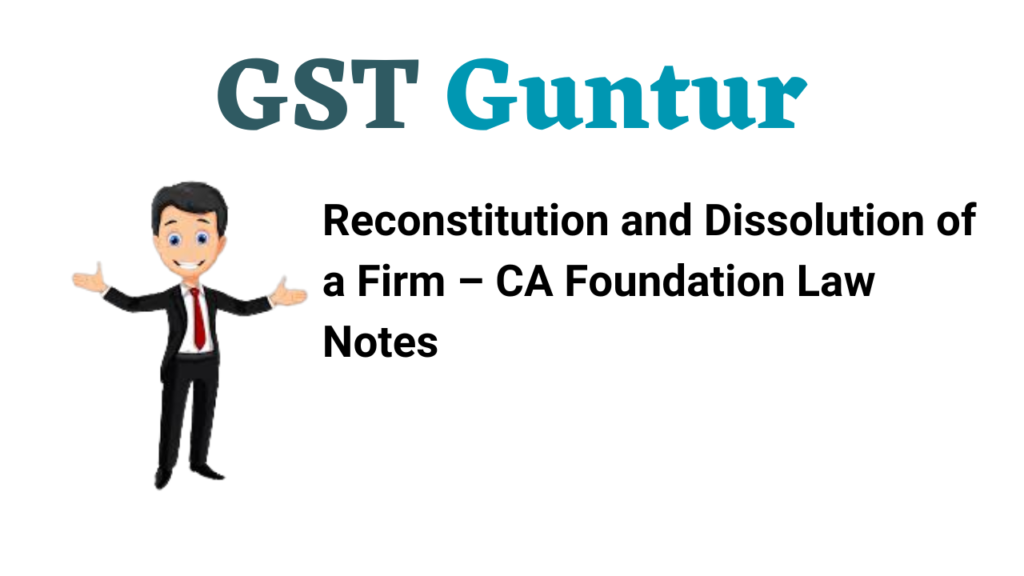

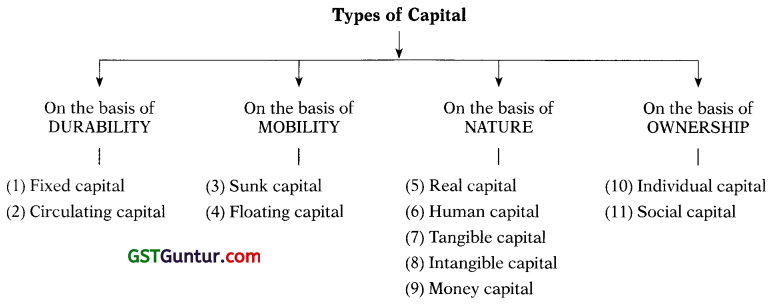
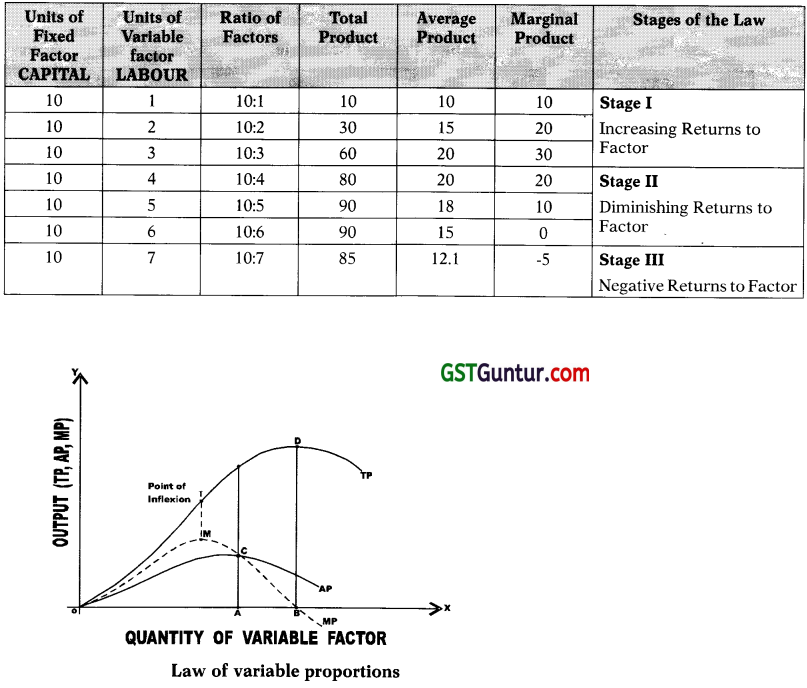
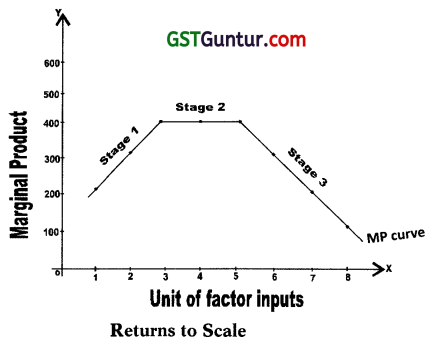

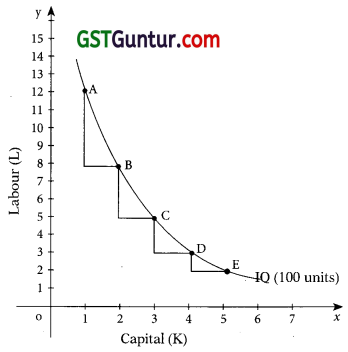


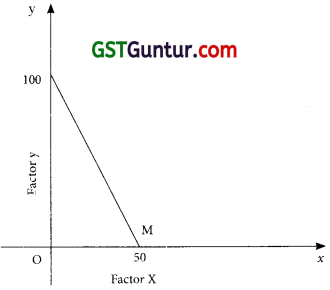
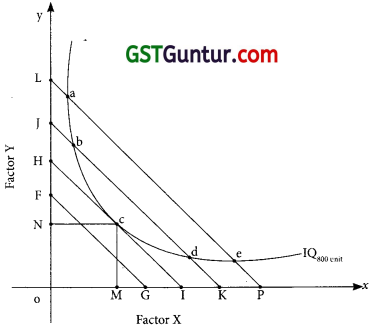

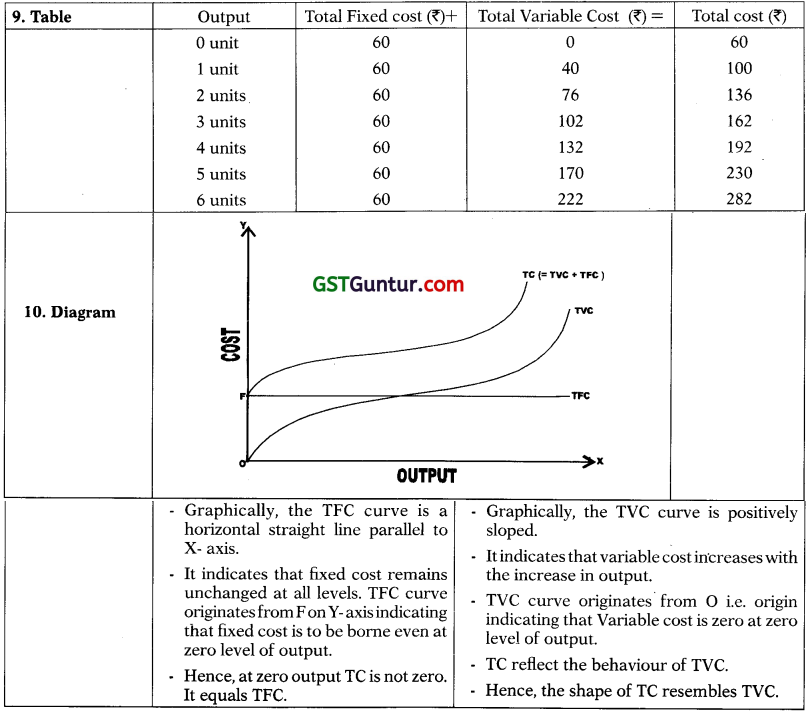
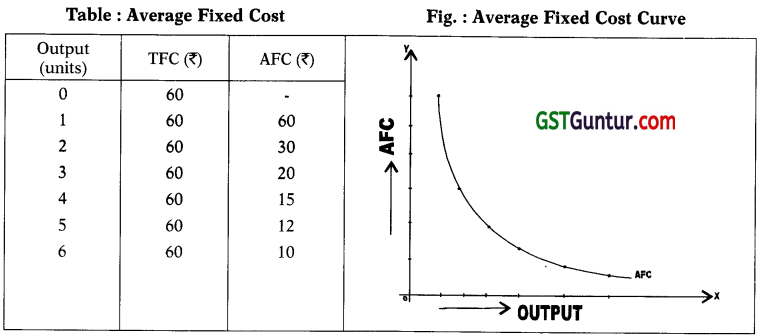
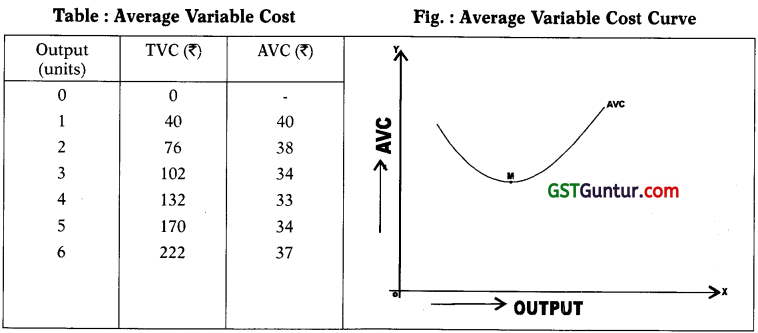
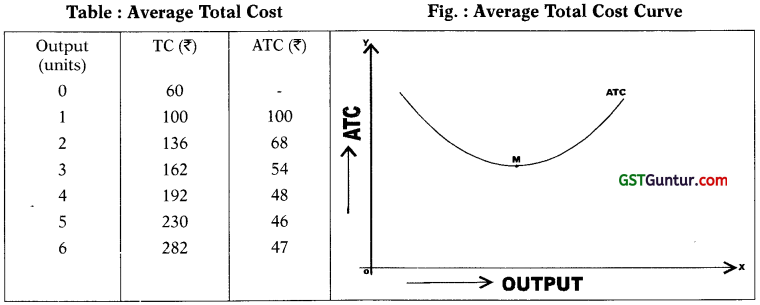
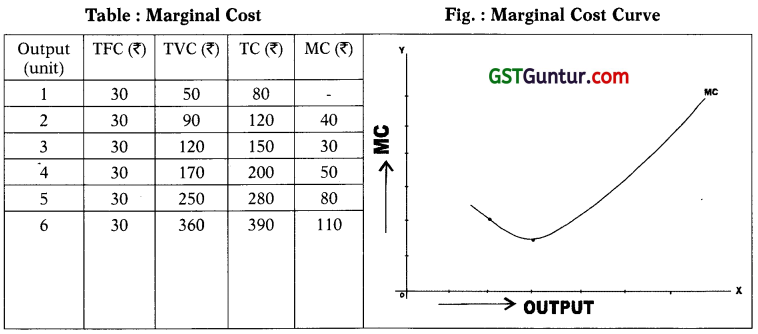

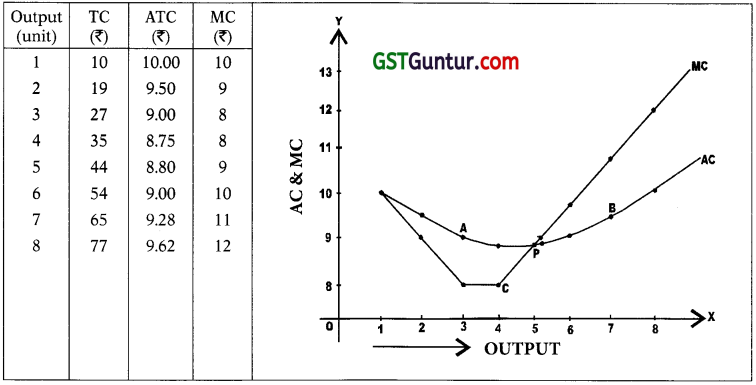

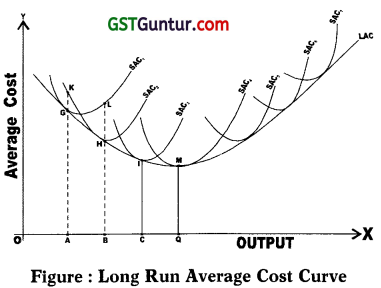
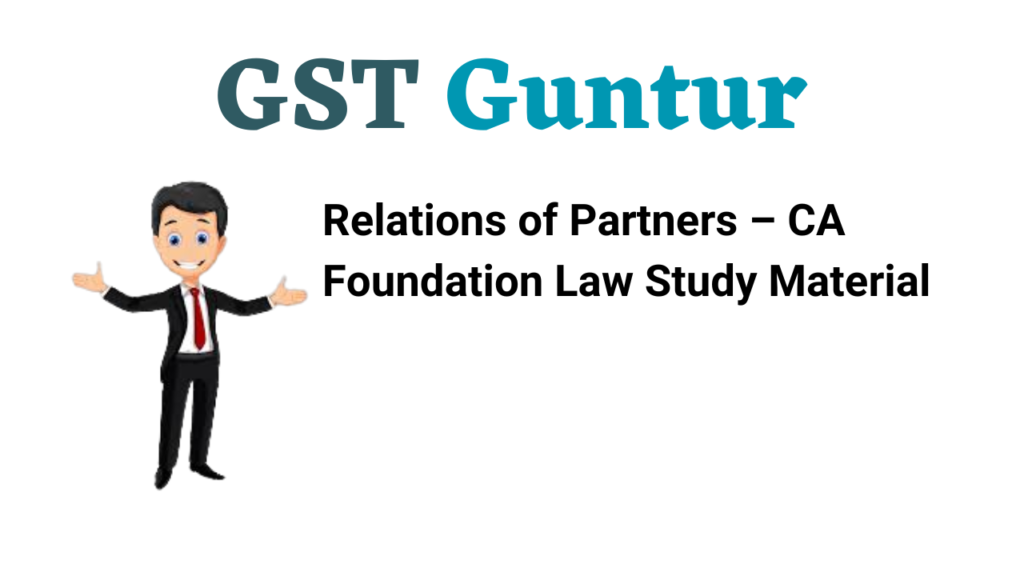
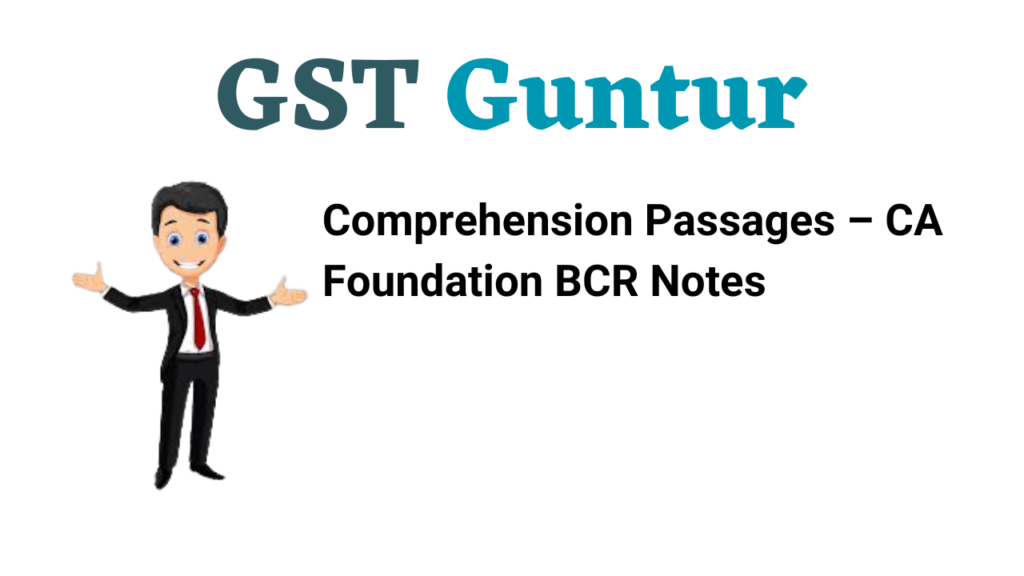

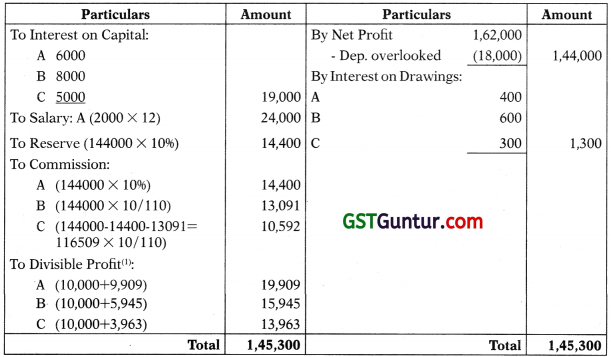
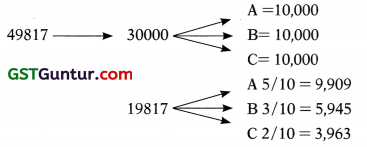

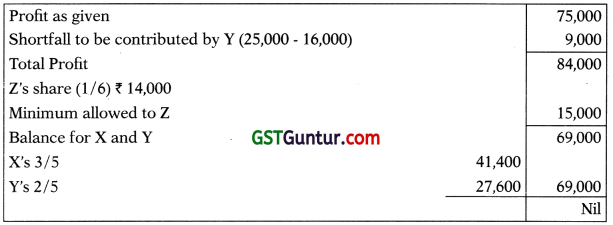



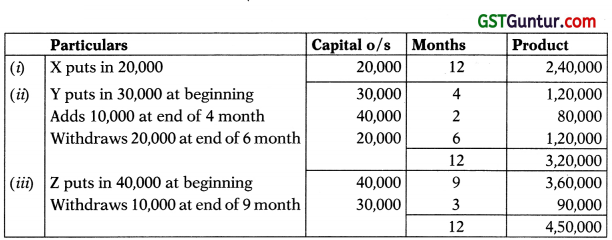
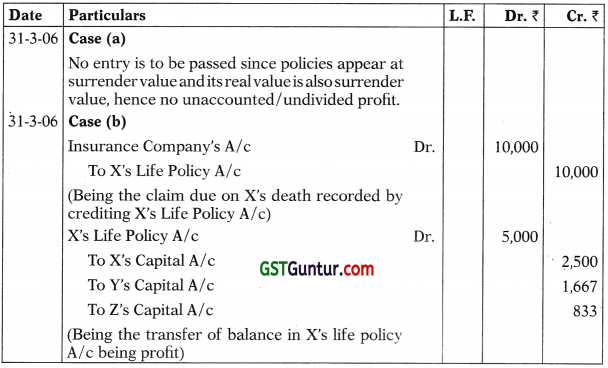



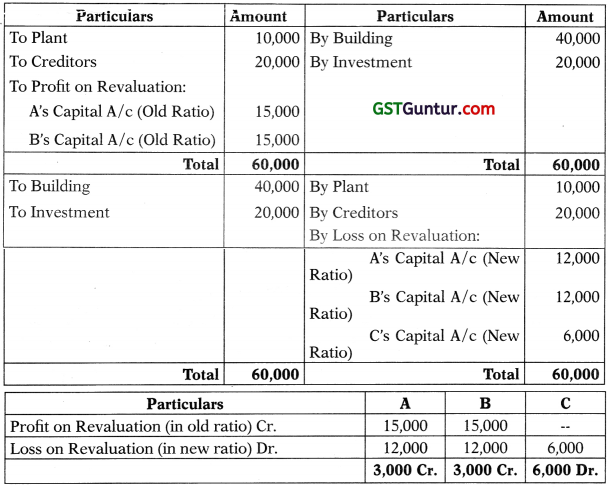



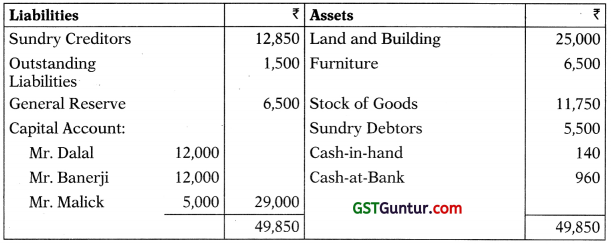
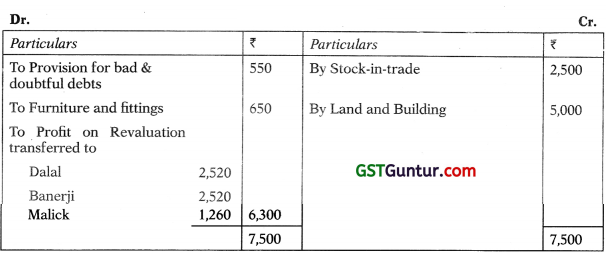

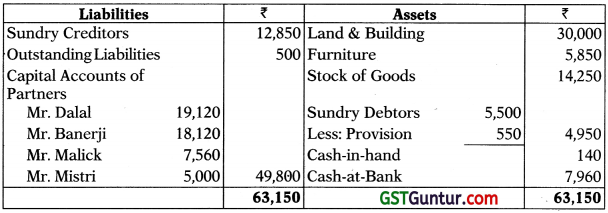













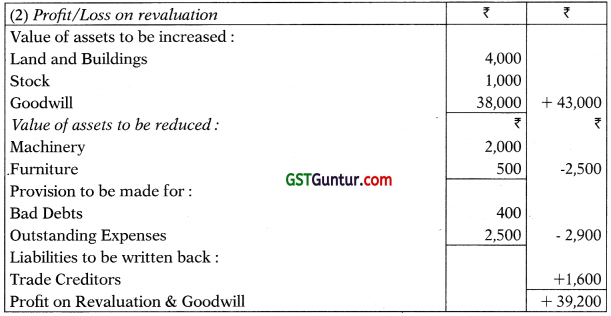

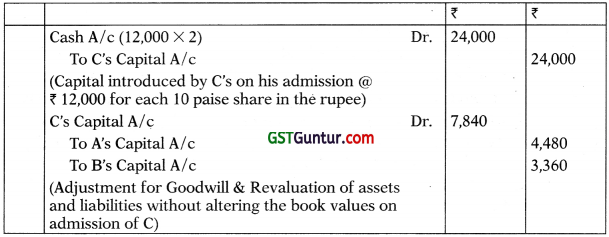






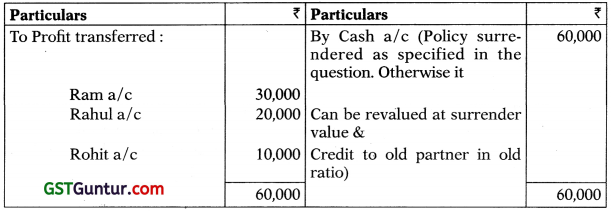

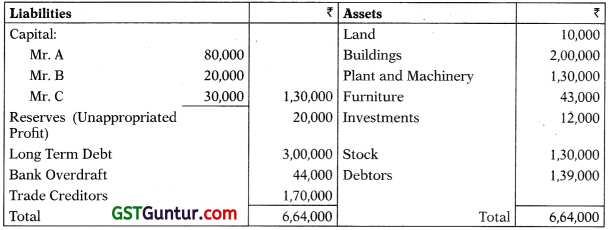
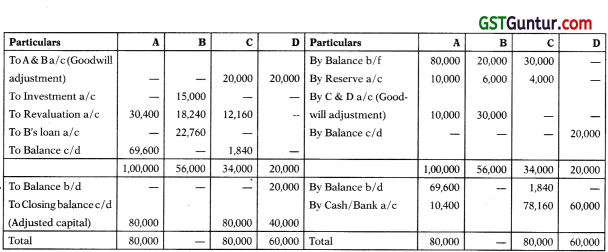



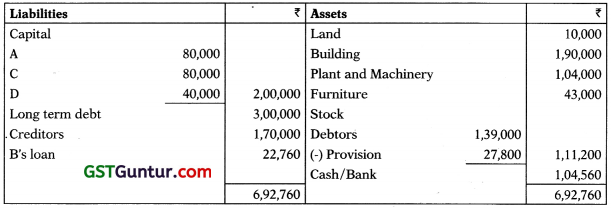 G
G